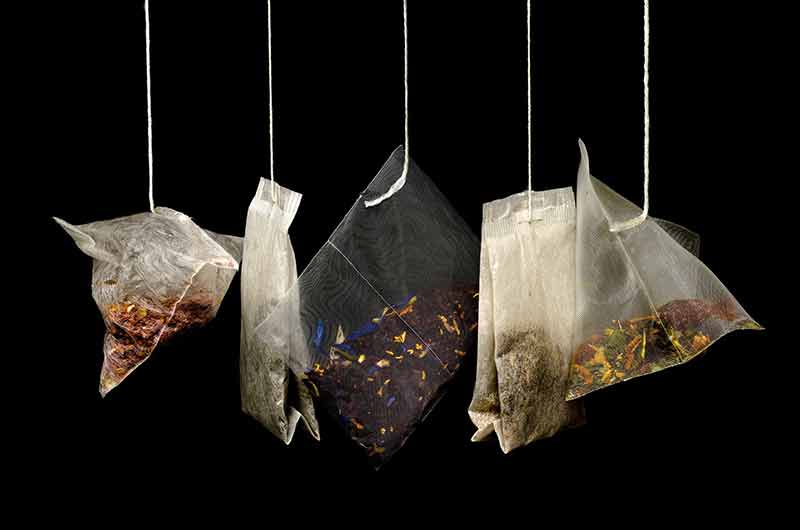Have you ever felt like having a hot cup of tea before your day starts? Well, you are not alone. Billions of people from many countries feel the same. Having tea twice a day, or even more in a few countries, has become part of our life and culture irrespective of geographical distance. Hence, Its no surprising to have so much types of tea around the globe.
Apart from being a morning ritual, Tea is also considered as a refreshment drink. Sneaking time between stressful, tiring and boring work and enjoying tea is a great refreshment break for every tea lover. It is no wonder that this drink has surpassed coffee and stands next to packaged water in terms of per capita consumption.
Table of Contents
History
Origins of tea dates back to thousands of years. Many historical evidences suggest its origin to be from China. However, this is not factual evidence for it has been extensively used in both India and China since eons. Ancient scriptures of both the countries show the use of this drink for medical purposes along with ginger, honey and lemon.
It was not until Dutch and British colonisations that tea got popular in Europe and trading on a wide scale began. With the rising demand for tea, more land was converted to tea farming. There was always an indirect competition between China and India in the share of tea exportation.
While China made the start to export tea to Europe, India started to gain more export demand with Black tea which is native to Indian geography. It is mostly consumed and imported by Europe, making India a leading exporter of tea. This made people realise that there are varieties of tea depending on various factors which paved a way for exploring various tea varieties all over the globe. As different soil types,weather patterns, geographical locations have significant influence on the crop growth, taste, aroma and health benefits of tea will differ.
Types of Tea
The most famous tea types include Black, Green, Oolong and White tea. However, there are other types of tea as well, which are either like subsidiaries or not as popular as these are.
Black tea (Our Famous Types Of Tea)
Black tea is made from the leaves of Camellia sinensis plant.The tea leaves are completely oxidised to make them dark in colour. This gives a unique strong aroma and flavour which attracted Europeons to start importing. Today, Europe is the major consumer of Black tea while India is the major exporter.
The oxidation process gives it more time before getting expired. This makes the trading more efficient as it can stay longer enough. India and China are the two manufacturers and exporters of Black tea, between which former one is the leading exporter.
Earl Grey tea
There are four variations for Black tea. These are typically made by adding certain ingredients to enhance the experience of Black tea and to make the flavour more strong.
When the Black tea is flavoured with fragrant oil of bergamot rinds, it is called Earl Grey tea. It has a stronger aroma and flavour than Black tea. There is no particular source to find the origins for this tea. However, legend says that this tea is a gift to Britain lord given by Chinese mandarins.
Traditionally Earl Grey Tea is made with hot water as it was used to be prepared from a China keemun plant. Tea made from this plant gives better flavour with hot water rather than with milk. Hence, to add milk, later this plant was replaced with a Ceylon originated plant.
Green Tea
Green tea is also made from leaves of the same plant from which Black tea is made. However, unlike Black tea, the leaves are not oxidised. Hence the green and fresh colour of green tea leaves. Like other tea varieties, green tea can also be served with ginger, lemon or honey. This is usually consumed with hot water.
Green tea cultivation is done in both China and India. However, china is the leading producer and consumer of Green tea, consuming about 50 percent of the world’s green tea consumption which is followed by Japan.
Oolong tea
Oolong tea is native to South China where it is consumed most. In spite of being made from the same tea plant as Black and Green tea, Oolong tea gets its unique aroma from its process of making. The tea leaves are partially oxidised(10-90%) which is made by withering the plant in hot sun to get oxidised to some extent, until it gets curled and twisted.
But, the process has repetitive stages until the desired browning of leaves happen. Timing and temperature being very important factors, more attention to details is important in the manufacturing of Oolong tea.
With differences in making procedure and crop species, Oolong tea has various flavours. The taste can vary from being sweet and juicy to being woody to having complex aromas. Few Oolong tea varieties are literally baked, few are hand twisted, few are added with other flavours.
White tea
Minimally processed tea leaves of Camellia Sinensis are used in the making of White tea. Manufacturing starts with picking young tea leaves which itself is stringent and very choosy. The leaves are then made to wither and dry before proceeding to white tea preparation.
White tea is known for its less strong aroma when compared with Black and Green tea. With its less flavor and sweet taste, White tea has its own uniqueness. Difference in plant species and geographic conditions create differences in flavour. Hence, flavour will differ between leading White tea producers like China, Nepa, North East India, Taiwan, Sri Lanks and Thailand.
Different Types Of Tea
Licorice root tea
The roots of plant Glycyrrhiza glabra plant are called Licorice. Tea made from this is called Licorice root tea. This is native of Western Asia and Southern Europe.
Licorice is well known for its inherent sweetness which is evident from Greek originated word Licorice, meaning sweet root. The sweetness of this tea combined with the aroma gives a unique experience. The sweetness of the tea lingers in the tastebuds for a longer time giving the taste of tea even after consuming tea.
Marshmallow root tea
Just like Licorice root tea, this is also not a traditional tea crop. Roots of marshmallow or Althaea officinalis plants are dried and processed to make tea. By and large found on river banks and salty soil, these are native to Western asian, Europe and North africa.
Marshmallow has a pungent odour with root like earthy flavour. This soothing flavour gives a refreshing experience for the consumers.
Peppermint tea
Peppermint tea is native to Europe. However, archaeological surveys discovered traces of Peppermint tea proving that it was being used thousands of years ago in Egypt as well.
The tea is made from the dried leaves of peppermint plants. It is very aromatic and gives refreshment instantly with its mint flavour. Having got inherent sweetness, there is no necessity to add sugar in the tea.
Reasons for different types of tea
There are many factors affecting and influencing the growth of Tea. It is these factors that cause the difference in composition and thus aroma, taste and health benefits of it. The major factors are
Geographical conditions
Tea crops grow well on a high level land with good drainage. Loose soil with better water percolation is considered as the best soil for tea plant growth. Moreover, The soil must not be concreted until 2 metres underneath the crop. The ground water table should be well above 90 cms.
The ideal pH level of the soil is between 4.5 and 5.5v with organic content more than 2 percent. As these factors may vary with time, utmost care must be taken to protect the soil fertility.
Rainfall
Adequate rainfall is an important factor for any crop. However, the moisture sensitivity of tea crop quality makes it the most important factor. As the tea crops need a high level land, the rainfalls are not uniformly distributed throughout the crop season.
During monsoons the heavy rainfall makes it difficult for drainage and soil erosion. Less than average rainfall in winter means less crop growth as it gets difficult to maintain moisture content in the soil. More dry spells can result in the death of crops.
Tea crops grow well with good moisture and underground water. Hence it’s very important to maintain the uniform distribution of rainfall. And that exactly effects to different types of tea qualities.
Temperature and RH
Temperature plays an important part because of the high altitude geography. The lesser the temperature gets, the dormant the crop gets and the hotter it gets the less moisture the crop receives thus affecting the photosynthesis. The ideal temperature suitable for tea crops is between 13°C and 28-32°C.
In many high altitude areas where tea crops are grown, the winter temperatures average below 12°C due to which there will be no yield whatsoever in the winter season.
Day length
Just like human behaviour and productivity depends on the length of a day, plants also depend on the duration of day for its growth. A day less than 11-12 hours results in very less growth in tea crops thus reducing the yield. Hence, the farther the geography is from the equator the more difficult it becomes for tea crop growth.
North Eastern India, due to combined effects of lower than adequate temperature and day length, tea crops remain dormant throughout the winter season.
All these factors combined dictate the quality of the crop. Which, obviously, will determine the leaf size, aroma, flavour and chemical compositions. For example, Black tea leaves from China are smaller than those grown in India. Moreover, they have strong aroma as well.
Hence, maintaining all these factors from time to time and being conscious about regulating and managing rainfall is important to make maximum yield.
Having Different types of tea flavors
Although there are many types of tea varieties available, its flavour and health benefits can be enhanced by adding such ingredients. Depending upon the additives, the name of the tea also gets changed depending upon the region.
The names of the tea thereof depends on the additives as well. For example, Black tea mixed with ginger is called “masala tea” in Indian Subcontinent. Few tea manufacturers add flavours of jasmine, lavender, mango etc to enhance the experience of tea.
Traditional Types Of Tea
However, universally, these are called Ginger tea, Lemon tea and Honey tea, where tea can be anything among four traditional tea varieties. Although initially tea is consumed with hot water, Europeans introduced adding milk to the tea adding to the warmth tea provides.
All these tea varieties have distinctive flavour and aroma. In spite of this uniqueness in each tea variety, the fundamental composition is by and large the same. They have Theanine, Flavonoids and Caffeine(except peppermint tea) in distinct proportions.
Turkey leads other European countries in per capita consumption of tea averaging 3-4 cups of tea per day. However, there are many other countries where people consume tea twice a day as a daily ritual. As the alertness is increased with tea, the increasing workload makes one opt for a hot cup of tea to relieve stress and get energy. Gradually over centuries, tea has become part of culture in many countries.
Starting as a medicinal drink in India and China, attracting Dutch and England traders to trade it to Europe, tea has reached the status of “day making” almost similar to the likes of water which is “life making”. A day without tea is almost unimaginable for billions of people on Earth.


